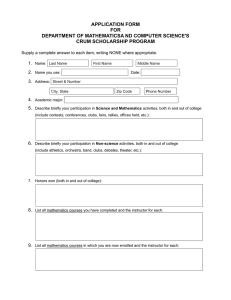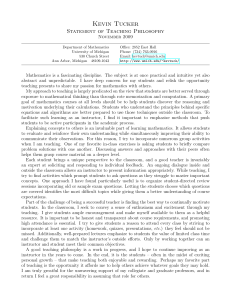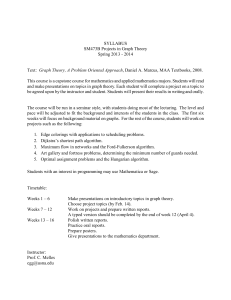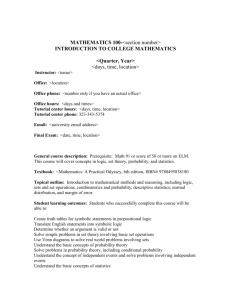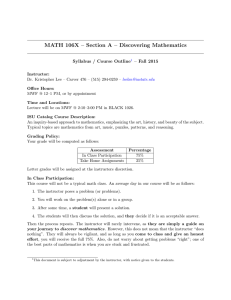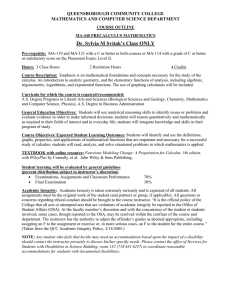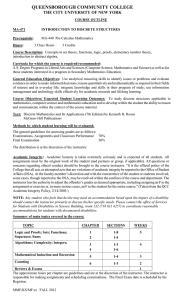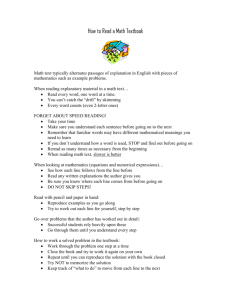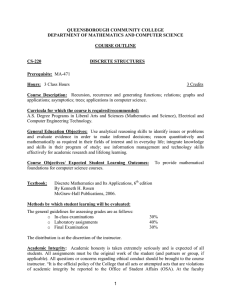HOW TO SUCCEED IN MATH CLASSES
advertisement
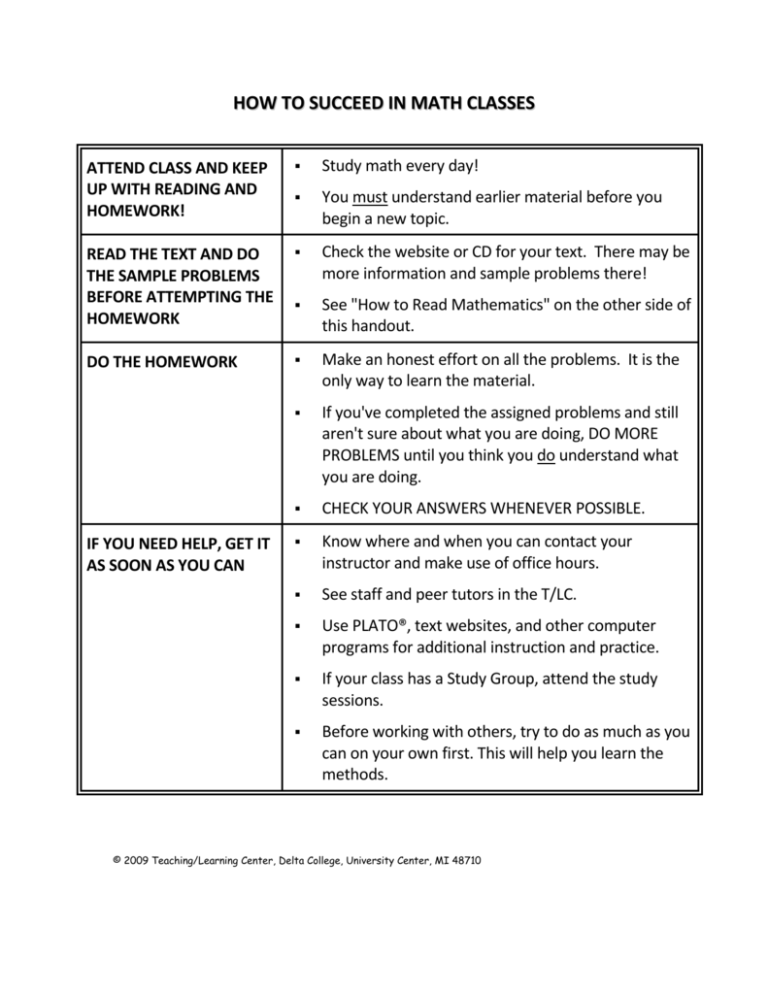
HOW TO SUCCEED IN MATH CLASSES ATTEND CLASS AND KEEP UP WITH READING AND HOMEWORK! Study math every day! You must understand earlier material before you begin a new topic. READ THE TEXT AND DO THE SAMPLE PROBLEMS BEFORE ATTEMPTING THE HOMEWORK Check the website or CD for your text. There may be more information and sample problems there! See "How to Read Mathematics" on the other side of this handout. DO THE HOMEWORK Make an honest effort on all the problems. It is the only way to learn the material. If you've completed the assigned problems and still aren't sure about what you are doing, DO MORE PROBLEMS until you think you do understand what you are doing. CHECK YOUR ANSWERS WHENEVER POSSIBLE. Know where and when you can contact your instructor and make use of office hours. See staff and peer tutors in the T/LC. Use PLATO®, text websites, and other computer programs for additional instruction and practice. If your class has a Study Group, attend the study sessions. Before working with others, try to do as much as you can on your own first. This will help you learn the methods. IF YOU NEED HELP, GET IT AS SOON AS YOU CAN © 2009 Teaching/Learning Center, Delta College, University Center, MI 48710 HOW TO READ A MATHEMATICS TEXT A math text has sections of math and sections of explanation written in special, stylized English. Read every word, one word at a time. The author may explain something verbally only once. If the author seems to repeat, it's probably to make a slightly different point. Read slowly. Understand each part of a sentence as you go along; if you can't, STOP until you figure it out. You may have to read a passage several times. Read and reproduce these on paper as you go along. DO NOT merely write down what you see in the book. Try to work out each step for yourself, step by step with the author. Then close the book and try the problem again on your own. If you get stuck, check that step in the book and continue on your own. Do the whole problem several times until you can reproduce the solution with the book closed. DON'T MEMORIZE THE SOLUTION. Keep track of operations, of what to do to move from step to step. Don't worry if it takes you two or three steps to do what the author does in one. Homework and exam questions are often very similar to sample problems. HOW TO READ ILLUSTRATIONS Like words and problems, pictures need careful study. Take time to understand the illustration thoroughly. This is especially true of graphs, which often have much information in a small space. HOW TO ASK QUESTIONS! What's obvious to the author can be a mystery to students. If you don't understand a point, other students probably don't either. Someone has to be brave enough to ask the instructor what it means! HOW TO GET MORE HELP Your instructor is your first source. Check your book’s website or CD. If your class has a Study Group, attend the study sessions. Visit the Teaching/Learning Center for help from a staff or peer tutor. HOW TO READ THE EXPLANATORY MATERIAL HOW TO READ SAMPLE PROBLEMS THAT ARE WORKED OUT IN DETAIL
